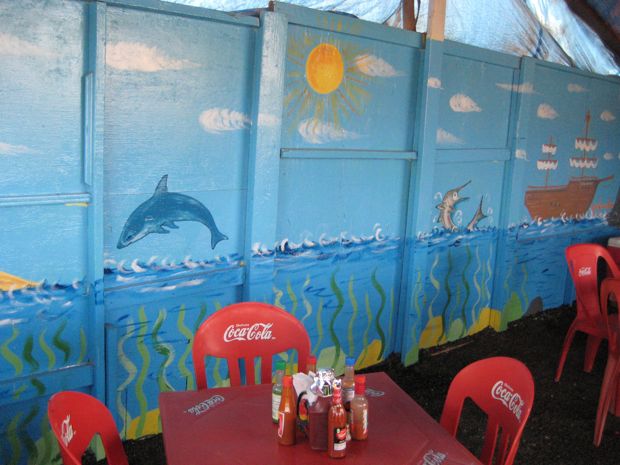
Roadside seafood stand.


Roadside seafood stand.
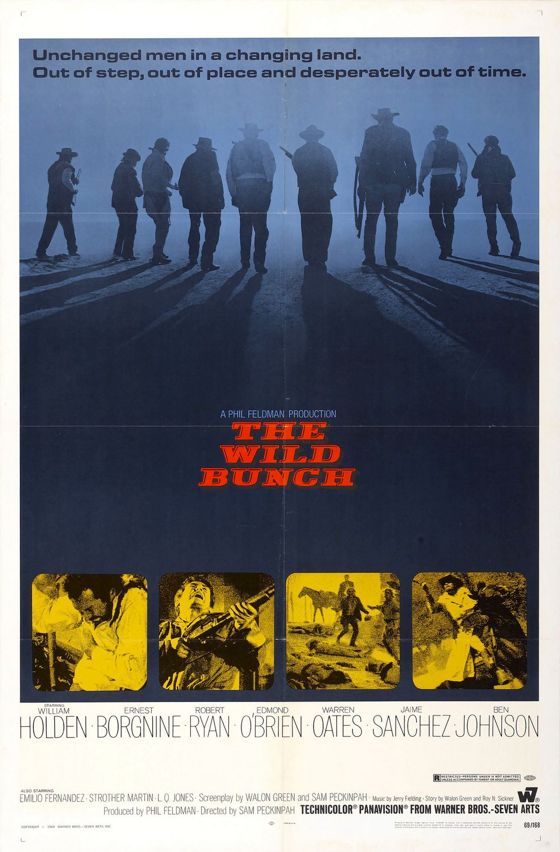
[Note: If you’re a big fan of The Wild Bunch, please don’t read this post — it will really piss you off.]
I know that The Wild Bunch has a lot of cool stuff in it, a lot of cool lines and situations and scenes. I know how startling a film it was when it first came out, because I saw it when it first came out and was startled. I know its historical importance in inaugurating the era of the anti-Western. I know that it was made by a filmmaker of genuine genius and has one set-piece action sequence that’s very close to being brilliant.
But I also know that, overall, it’s badly written, badly shot and badly edited. It’s a mean-spirited, crappy little movie, for all its reputation, and its commentary on the Western genre, its revision of that genre, is puerile and meretricious. It was made by a man who understood and loved the genre but sold his birthright for a mess of porridge.
If your positive feelings about the film are based on viewing it as a young person, then I can understand them — when I was a child I spake as a child, too. But when I became a man, I put away childish things. If your positive feelings about the film are based on a recent viewing and careful consideration, then I either don’t respect your judgment or I don’t like you.
There are some things a man can’t ride around, and for me The Wild Bunch is one of them.
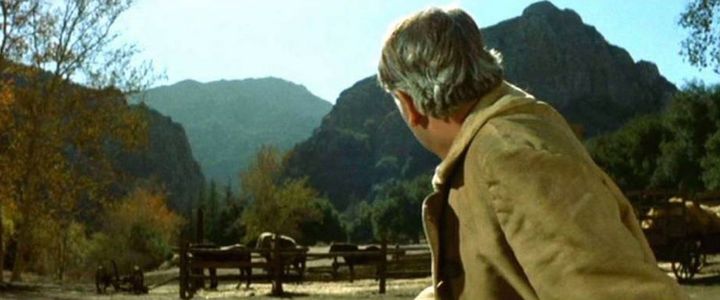
This was Sam Peckinpah’s fourth Western feature. The second, Ride the High Country (above), was one of the great twilight Westerns — a tale of the passing of the West and of the men who tamed it and of the code they lived by. Peckinpah didn’t write that film. He did co-write The Wild Bunch. It has elements of the twilight Western. Its protagonists are aging outlaws off on one last adventure just before WWI — but these men have only the crudest sort of code, which basically boils down to the idea that there should be honor among thieves.
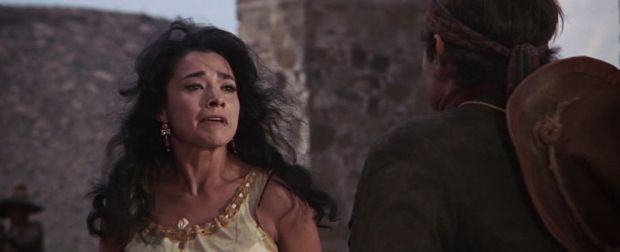
They think nothing of murdering innocent bystanders to get what they want. They tolerate one of their band murdering a former lover because she’s left him for a crud. They’re content to murder U. S. soldiers in order to steal weapons for a corrupt Mexican tyrant, in return for cash. They’re not above using unarmed women as shields in a gunfight.
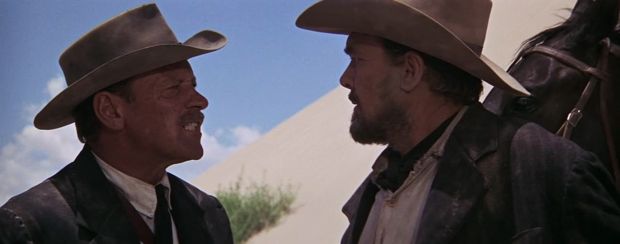
Yet somehow Peckinpah sees honor in these men — because they like to do things the hard way (why?) and because they stick together. In a famous scene, the leader of the outlaw band played by William Holden says, to quell an argument in the ranks, “When you side with a man you stay with him. If you can’t do that you’re just some kind of animal — you’re finished.” But if you side with a man in order to do bestial things, what the hell does a code like that add up to? Nothing much, really.
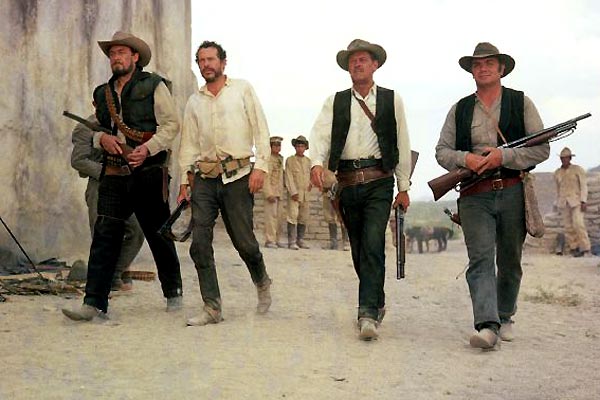
The film ends on a note of sacrificial bravery, or suicide by Federales, if you want to look at it that way, and it summons up enough of the old Western imagery to make you forget for a moment the real character of these men, brave but unprincipled by any conventional or admirable definition of the word, sort of like modern-day terrorists. Peckinpah offers an image of redemption that may fire the blood but cannot convince the heart.
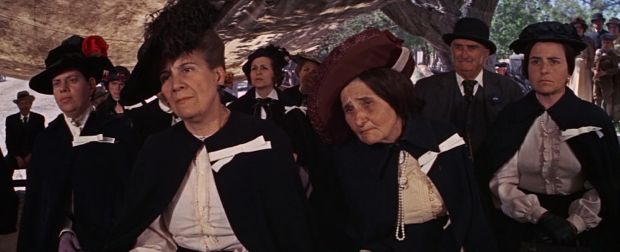
It being 1969, Peckinpah the screenwriter offers other apologies for the brutality and cynicism of his protagonists. The bystanders they kill are part of a hypocritical and corrupt society. The soldiers they kill are incompetent and of course, by implication, wear the uniform of the country that was at the time ravaging Vietnam.
It’s all crap of course — an attempt to burnish male violence and misogyny with some sort of vague social criticism. The outlaws make crude jokes amongst each other and then laugh really hard over them — when you hear that totally unconvincing laughter, you know it’s just a cue to the young men in the audience to approve their own lowest locker-room sensibilities. In the paean to the men that ends the film, Peckinpah offers this rough-house laughter as a kind of transcendent image of the life force of the outlaws. It still rings hollow.
Peckinpah indulges his own adolescent insolence frequently in the film. He knows how to make beautiful shots of horses moving through landscapes, but his big equestrian stunts are all about tormenting horses and making them look awkward and ugly.
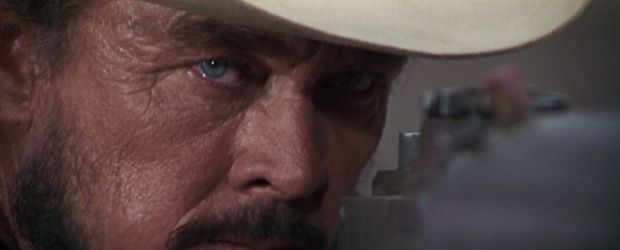
He seems to take a special delight in degrading the aging icons of the Western genre, having them do shameful things — Holden occasionally but Ben Johnson often . . . Johnson who had been for John Ford the symbol of grace in the saddle and moral grace as a hero. To show Johnson’s character drunk in a tub of water pawing a half-naked Mexican whore is to direct a gob of spit straight into Ford’s one good eye.
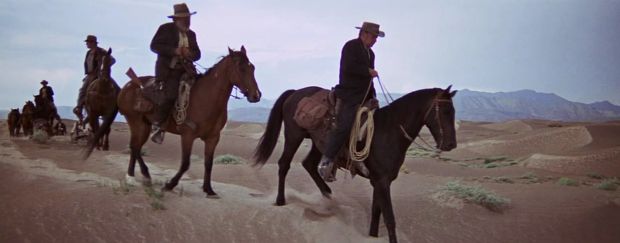
There are many beautiful images in the film, but many more which are turned into mush by telephoto lenses and zooms.
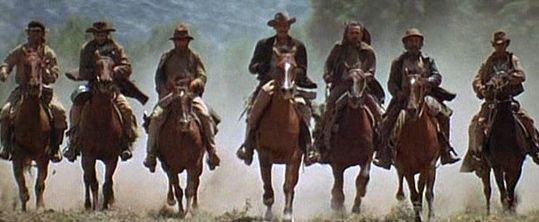
This style of shooting made the film seem new — in 1969. Today, it simply dates the work, making it look cheap, like something shot for television.
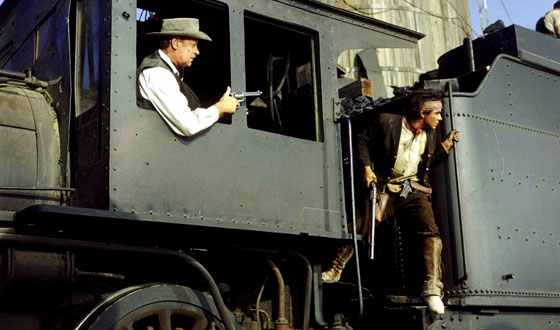
There is one almost wholly admirable set-piece involving a train robbery, which is well staged and well shot and well edited — it’s the work of a filmmaker who knows what he’s doing. But other action sequences are incoherent to the point of being unreadable, with fast cutting and shock zooms that give the impression of excitement by purely cosmetic means.
The film does have a few gracious moments — crepuscular mood pieces in which the nostalgia for past times is almost touching . . . would be touching if we could imagine that these men had ever been more than thugs. And there’s a mystical love for Mexico, for the sweetness of certain aspects of Mexican culture, that really is touching, even if it hasn’t got much to do with the rest of the film.
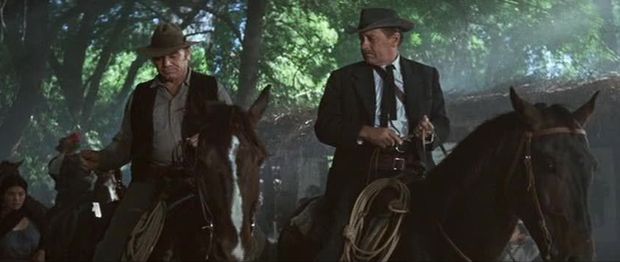
After an initial robbery gone wrong the “wild bunch” retreat south of the border and have a brief idyll in a small Mexican village. As they ride out of it the next day the villagers serenade them, and Peckinpah films their mounted procession in beautiful slow tracking shots. It doesn’t make a lot of sense — why do the villagers seem to worship such men as departing gods? — but it’s very sweet.
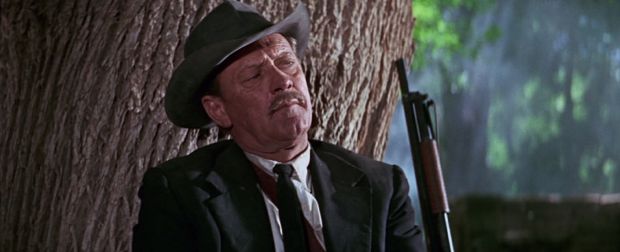
The Wild Bunch got its juice when it came out from its graphic violence and its swaggering nihilism — for its daring in deconstructing the myth of the old West created over generations in the movie Western. That sort of frisson has a short shelf life, though. The anti-Western cycle that this film inspired exhausted itself very quickly, and soon the Western was more or less finished as a commercial proposition. How many times can you deconstruct something that’s already lying scattered around in pieces on the ground?
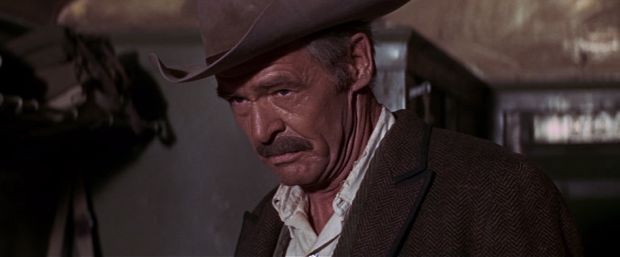
Guys who thrilled to this film in their youths may have a certain nostalgia for its crude, chaotic energy, like the crude, chaotic energy of adolescence itself — and we can’t very well begrudge them this. But it’s no movie for grown men, and it was a calamitous event in the history of the movie Western and thus in our culture at large.
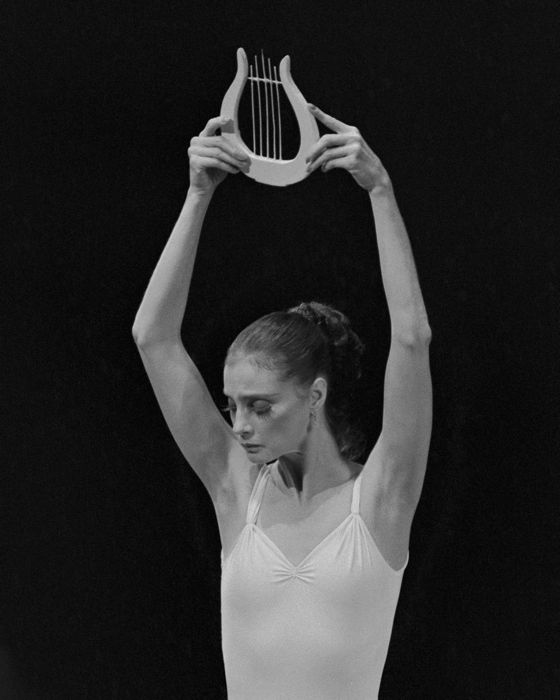
[Image © Paul Kolnik]
I learn from Oliver Sacks that neurologists use this phrase — the kinetic melody of movement — to describe the naturalness and fluidity of normal human movement. They call a halting, broken movement, caused by something like Parkinson's disease, a kinetic stutter.
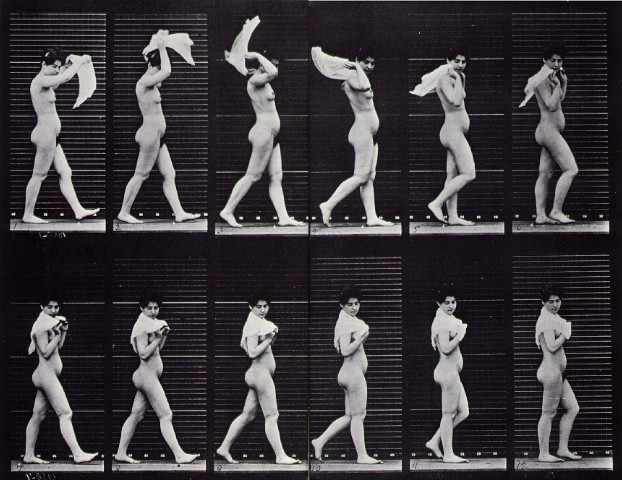
As Sacks explains it, “When we walk, our steps emerge in a rhythmical stream, a flow that is automatic and self-organizing. In parkinsonism, this normal, happy automatism is gone.”
Dance elaborates on this natural kinetic “melody” in order to celebrate it, and it is something worth celebrating, as a sign of health and prowess, crucial to early human societies, especially ones based on hunting.
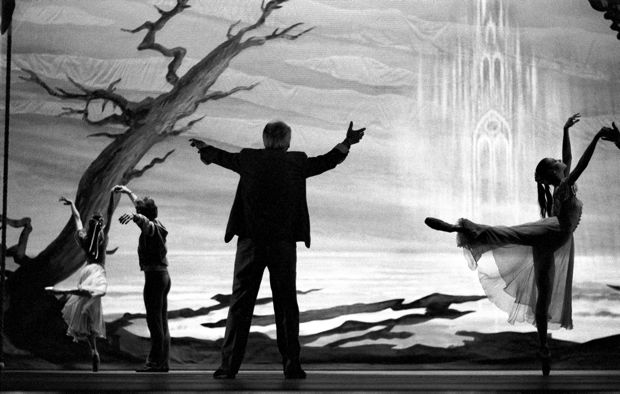
[Image © Paul Kolnik]
Like musical melodies, based undoubtedly on the pleasing qualities of human speech, especially in the unique voices of kinfolk and tribal allies, dance can become almost an end in itself — but it always retains an echo of the simplest kinetic melody, the song sung by any human body moving through space.
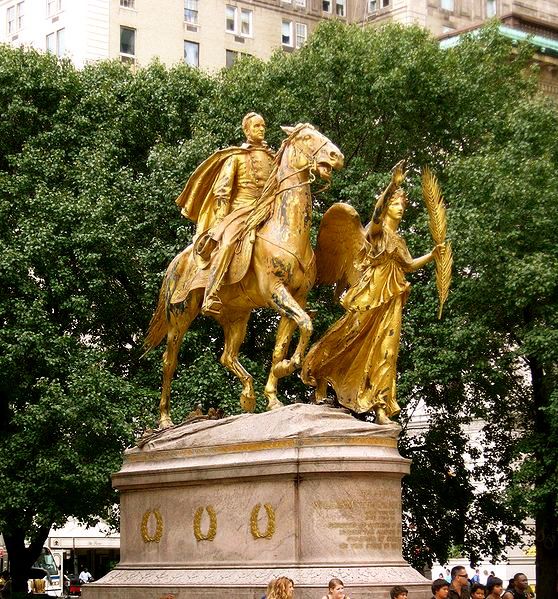
Sculptors, like Augustus St. Gaudens (above), and photographers like Paul Kolnik, who did the black and white images of the New York City Ballet here, can freeze motion in such a way that it implies the whole melodic arc of a movement.
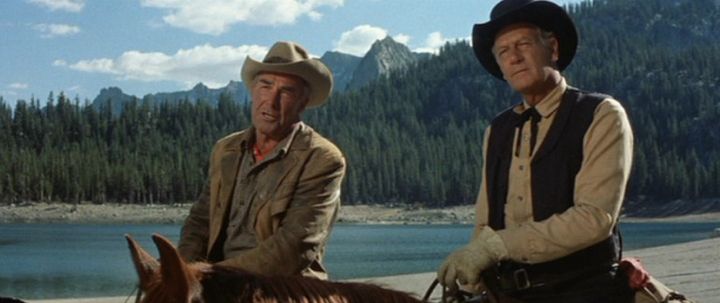
When a filmmaker puts a frame around some part of the world, she is helping define a space, and thus helping us read any movement through it as a kinetic melody. Such melodies can, by the choreography of the movement, become almost symphonic, in the way classical ballet can. Good Westerns, which enlist the noble and elegant kinetic melodies of horses, are always symphonic in this way.
Every great filmmaker knows, if only intuitively, that she is really making a kind of music with her images.
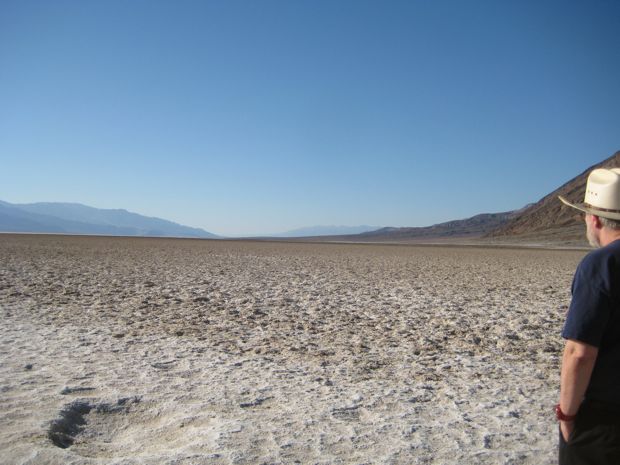
. . . his wars on God begin — at stroke of midnight God shall win.
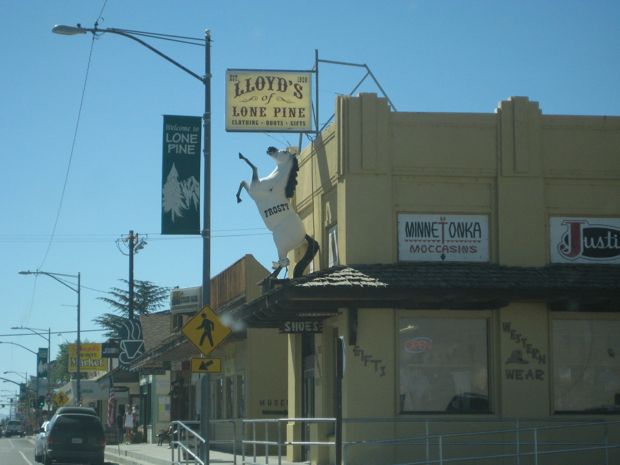
My nephew Harry and I, a couple of movie-mad kids at heart, made a pilgrimage last week to Lone Pine, California, to pay our respects to a location where scores of Westerns and other kinds of films have been shot over the years.
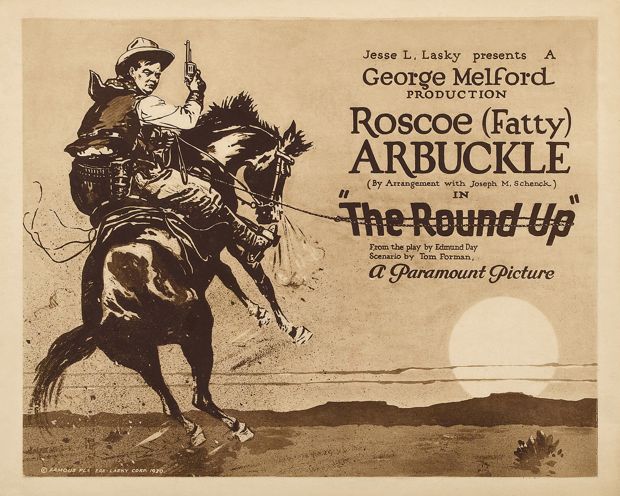
Fatty Arbuckle made The Round-Up there in the silent era (1920), and most of the exteriors of Gunga Din were shot there, incorporating some massive sets constructed in the Alabama Hills, in 1938.
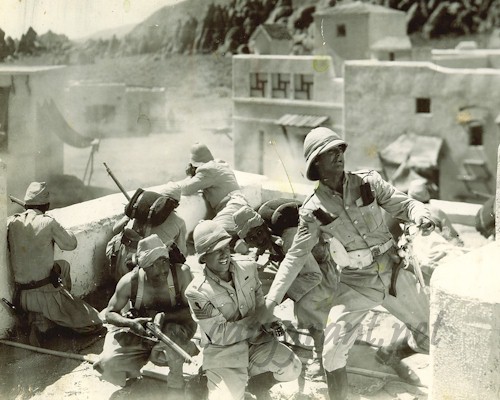
Many of the films in the Hopalong Cassidy series were made in and around Lone Pine . . .
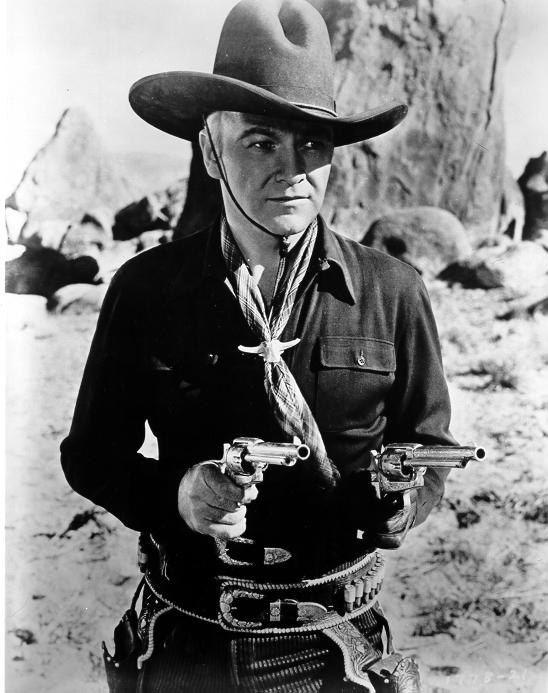
. . . and many of the Tim Holt Westerns, too.
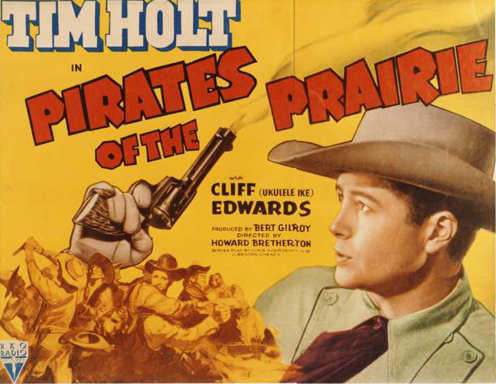
The films in both of those series are beautifully shot — they are B-Westerns with first-class cinematography and can be watched over and over again for the aesthetic pleasures of their images alone.
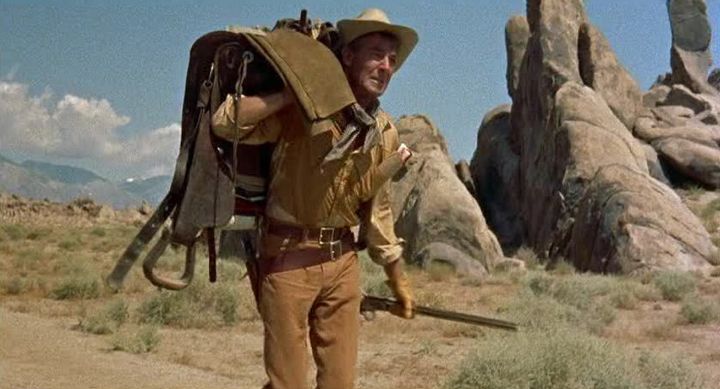
The greatest films shot in and around Lone Pine were the Randolph Scott-Budd Boetticher Westerns, including The Tall T (above), Ride Lonesome and Comanche Station (below), and these films have consecrated the locale for me. Lone Pine and the nearby Alabama Hills were for Boetticher what Monument Valley and Moab, Utah, were for John Ford. I wanted to move through that landscape and see the raw material from which Boetticher conjured his enchanted spaces.
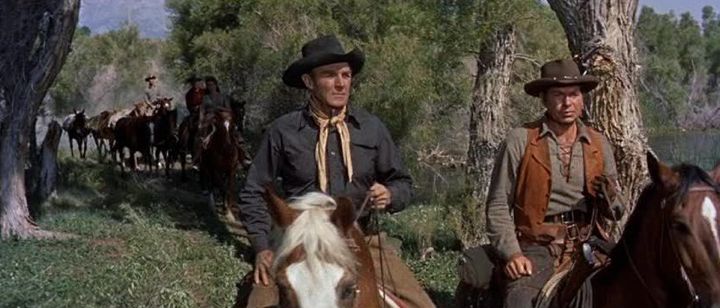
I was also doing a very preliminary location scout for a no-budget Western I'm working on, wondering if Lone Pine might be a place it could be made.
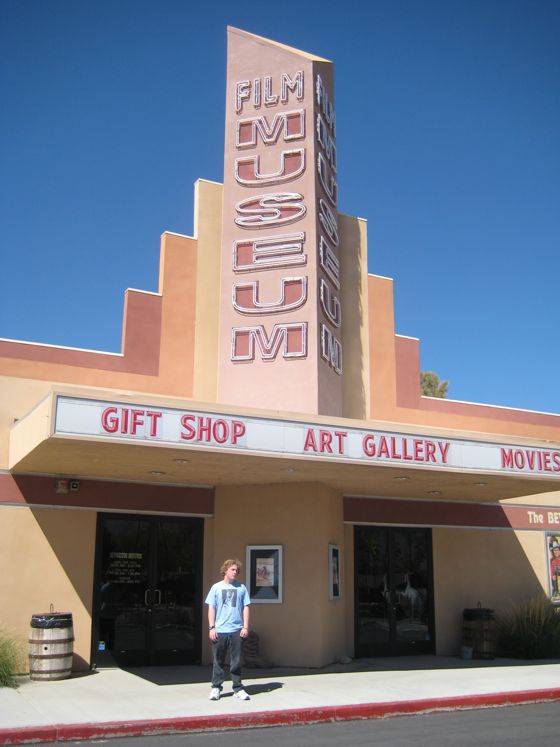
We started out our day at the excellent film museum in Lone Pine, which has an amazing collection of posters from the films shot in the area and a number of sublime artifacts — the most sublime of which was a cowboy hat worn by Barbara Stanwyck in a film made at Lone Pine. My heart skipped a little beat as I stood before it, thinking of the way that woman could sit a horse.
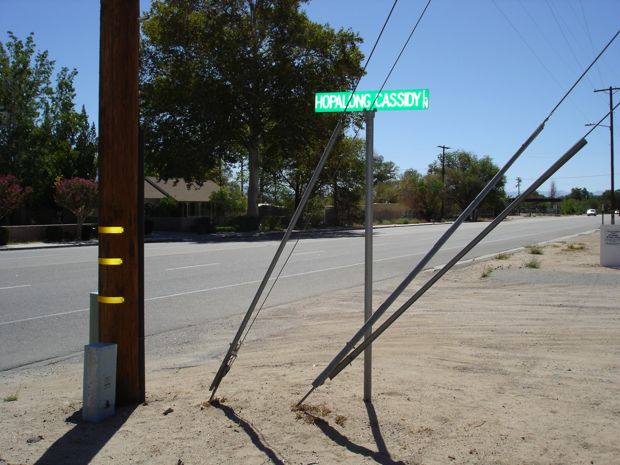
The lane above runs next to the museum.
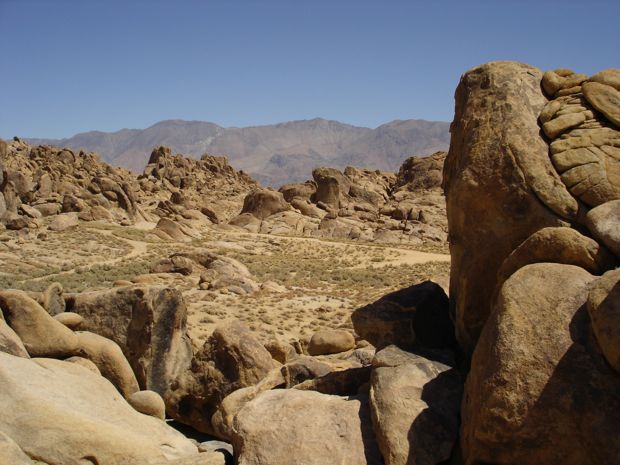
Like Monument Valley and the valley near Moab through which the Colorado River flows, Lone Pine has a lot of different-looking landscapes concentrated in a small area — which facilitates rapid company moves on a low-budget shoot. You can get a sense of numerous contrasting locations with minimal logistical complications.
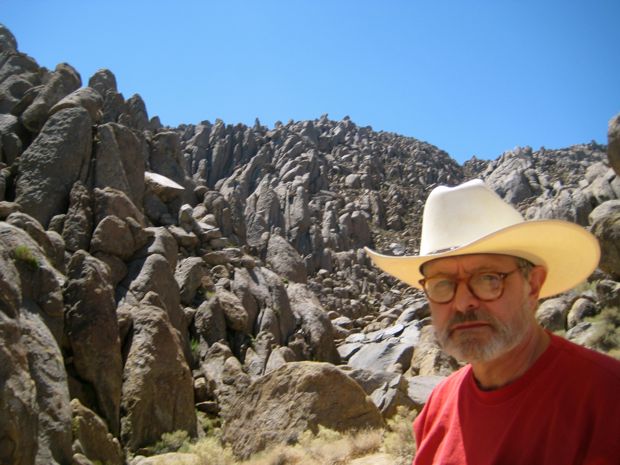
The Alabama Hills are a labyrinth of odd rock formations, passes and basins. Minutes away to the east the Owens River runs through shady groves and reeds — familiar from the beautiful river crossing scenes in the Boetticher films.
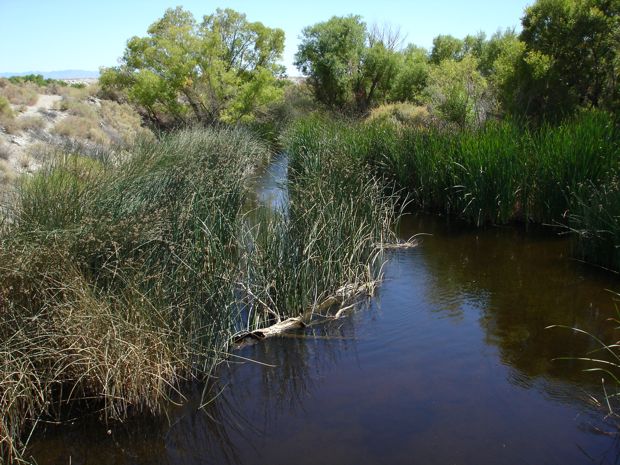
One of the glories of Lone Pine is the range of the Sierra Nevadas looming up to the west of the Alabama Hills.
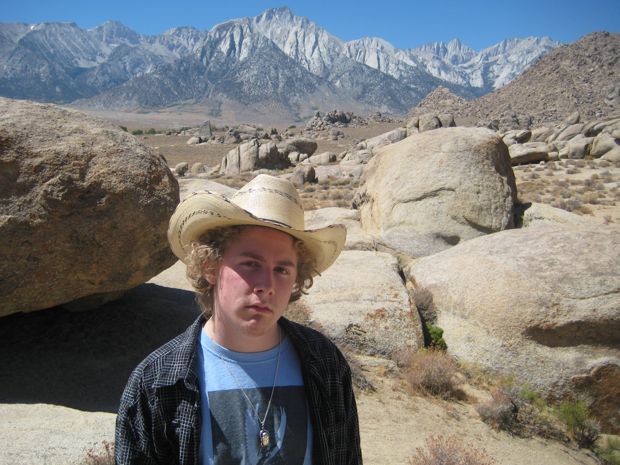
It makes for some spectacular scenery, but would be a problem for my film, which is set in North Texas, where such mountains do not exist. Working in the Alabama Hills or along the banks of the Owens, which could stand in quite well for Texas, one would be severely limited in the directions from which one could cover a scene, but it's probably a limitation one could live with.
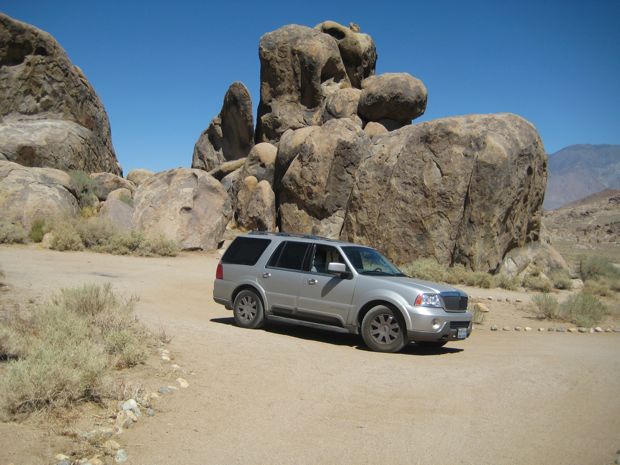
But that's a problem for another day. The day we spent in and around Lone Pine was magical — it's ground haunted by galloping ghost horses ridden by ghost cowboys, whose images live on, even in these degraded and ignoble times.
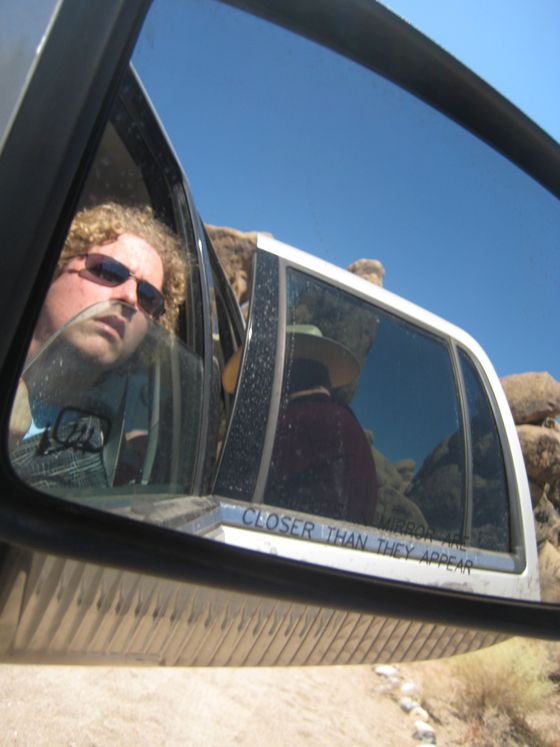
We drove back through the furnace of Death Valley that afternoon . . .
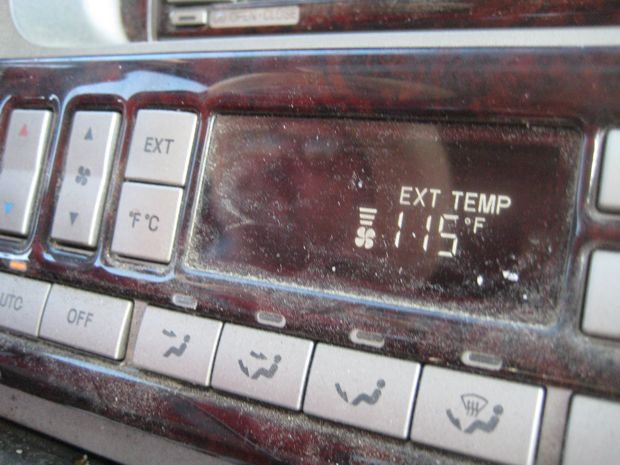
. . . and sped straight to the In-N-Out Burger for sustenance. That night, inspired by the grand Western landscapes of Lone Pine, Harry watched Jean Renoir's La Règle du Jeu for the first time.
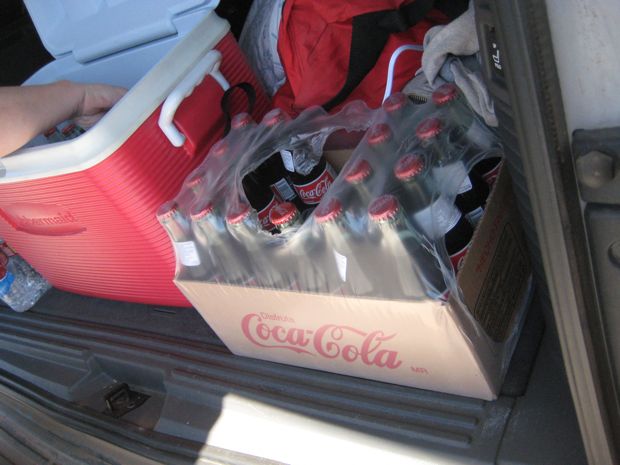
On Wednesday my nephew Harry and I headed off to Lone Pine, California, where hundreds of Westerns and other films have been shot over the years. Of course we took on board a goodly supply of Mexican Cokes, Mexican Cokes being the key to any successful road trip.
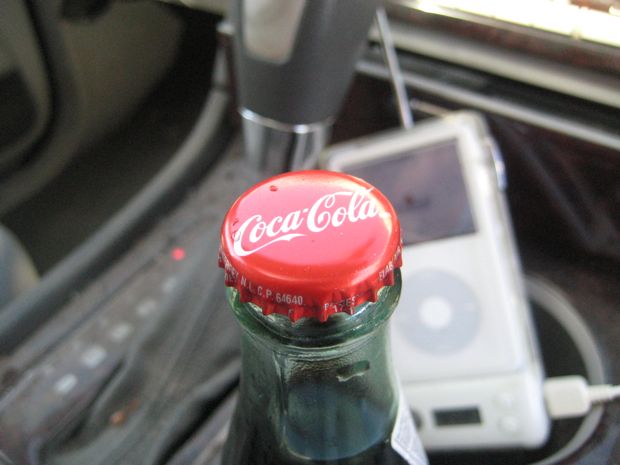
We also carried an iPod fully loaded with cowboy songs and Western movie soundtracks.
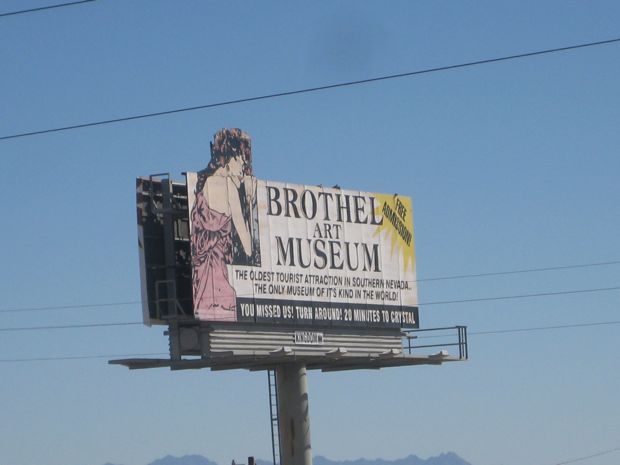
We chose a route to Lone Pine that would take us through Death Valley, which Harry had never visited. This entailed passing through Pahrump, in Nye County, Nevada, where prostitution is legal, and where Harry snapped a picture of the sign above, advertising one of the Silver State's odder attractions. The museum is attached to an actual working brothel, and is basically just a large barroom with pictures of whores and newspaper clippings about whores on the walls. It's well worth a visit, but we had no time for it on this journey.
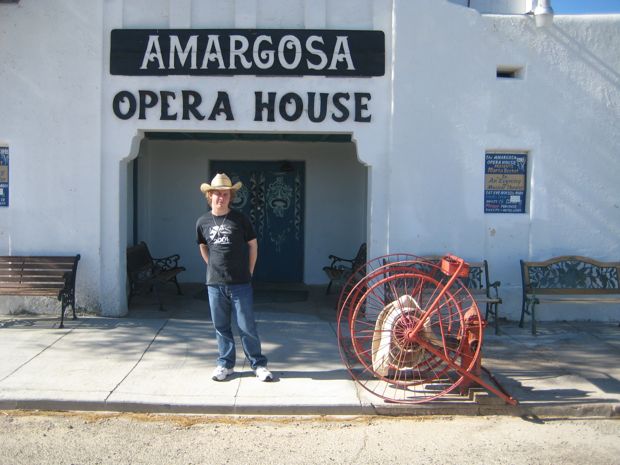
At the edge of the valley we stopped to take photos of the Amargosa Opera House, where an eccentric old woman puts on shows in an auditorium, every flat surface of whose interior she has painted herself with wild designs and figures. We had no time for this bizarre phenomenon, either, and proceeded into the park.
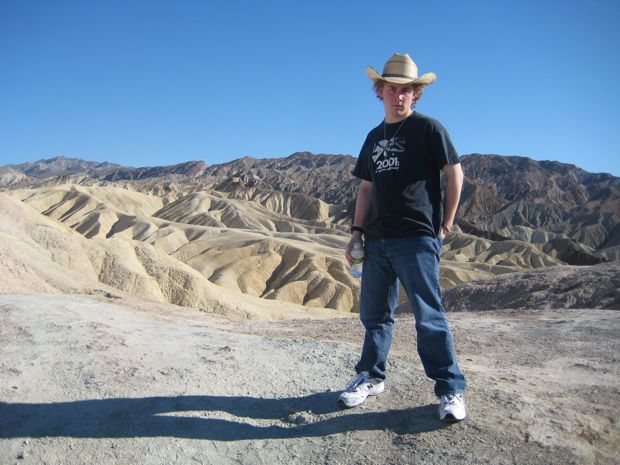
We stopped at Zabriskie Point to take in the bizarre topography (above), then headed to Badwater Basin, the lowest point of land in the Western Hemisphere.
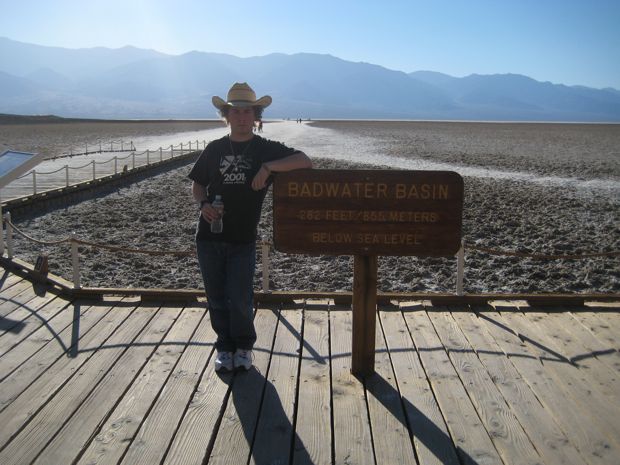
Harry walked far out onto the salt flat there, past the other tourists, and said that the silence was really spooky, with not even a breath of wind disturbing it.
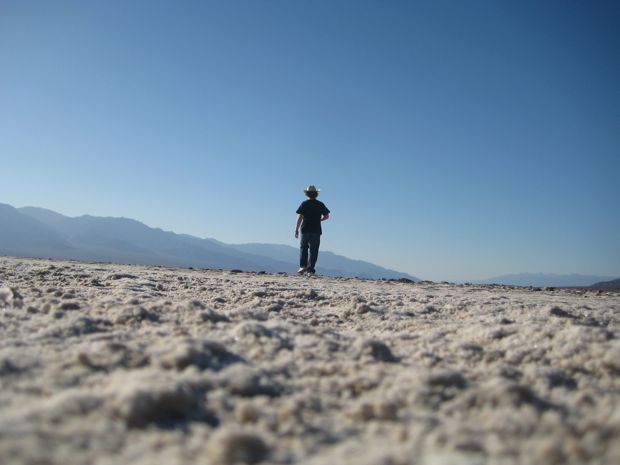
We continued west and stopped at the Mesquite Dunes, a ridge of sand dunes rising up improbably from the desert floor. We arrived just at sunset, when the light was exceptionally beautiful.
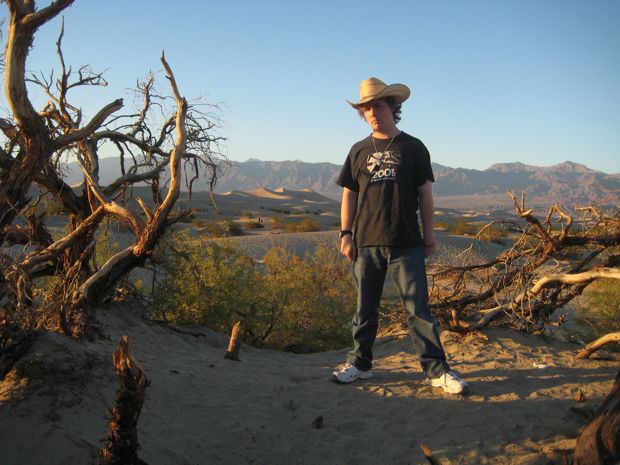
Then on through the night to Lone Pine and the Timberline Motel, run by a family of subcontinental Indians and a bit the worse for wear, but clean, with free wi-fi. It is one of the only motels in Lone Pine which welcomes smokers, who must be resigned these days to the shabbiest motels in any given locale when seeking roadside accommodation.
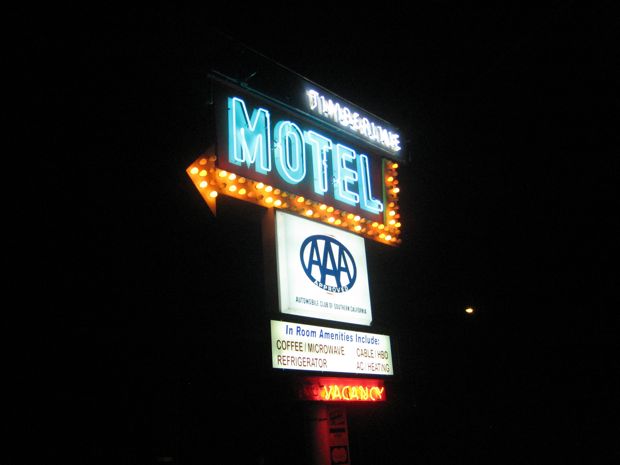
I was thus happy to give the Timberline my business, which seemed to be much appreciated, and happy to behold the “Vacancy” signs on the higher-class smoke-free motels in town, and to think how much they must be suffering in the current economy. I do not wish them well.
Harry had a decent steak and I had a hideous shrimp dish at a Chinese-American restaurant on the main street of town, then we hit the hay to rest up for our visit to the fabled Alabama Hills the next day — sacred territory once walked and ridden through by Randolph Scott and Budd Boetticher.
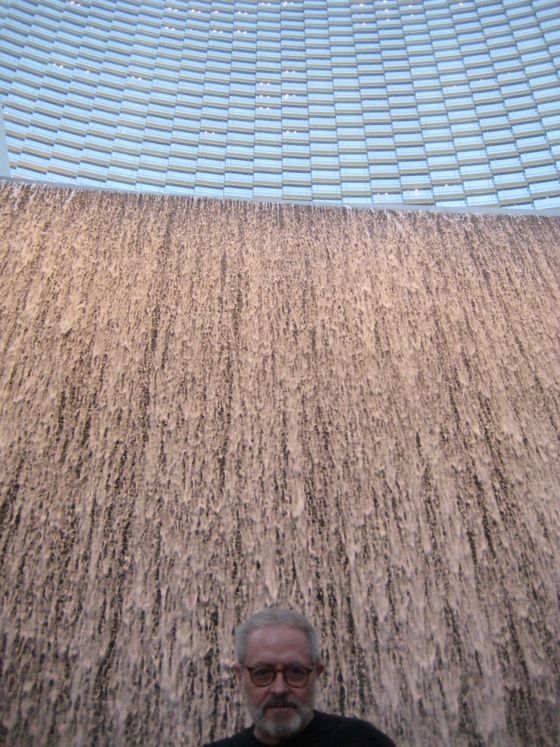
Here are a few more images of City Center, the city within a city recently erected in the middle of the Las Vegas Strip. It is, as I've noted, a vision of the future as it might have been imagined in the Sixties — cold modernism inflected with the charm of a future locked in the past, and thus unthreatening. If this seems confusing, conceptually, it merely reflects the conceptual confusion you encounter when actually visiting the place.
It is an architectural folly, on a grand scale.
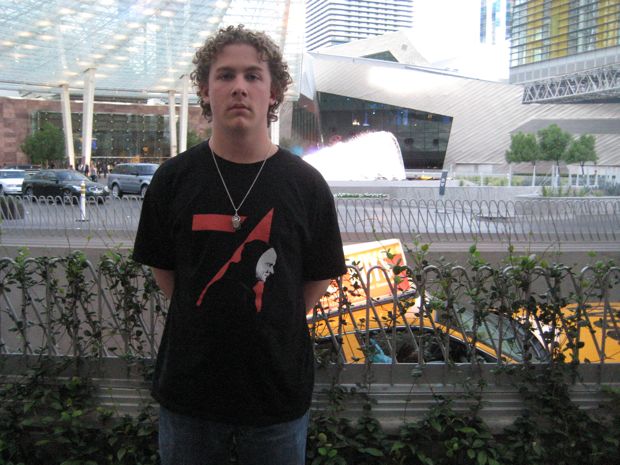
The automobile entrance to the Aria Hotel is a vast roundabout with a fountain in the center, on which colored lights play. One large section of the curved wall next to the port-cochère is a waterfall with continually shifting patterns.
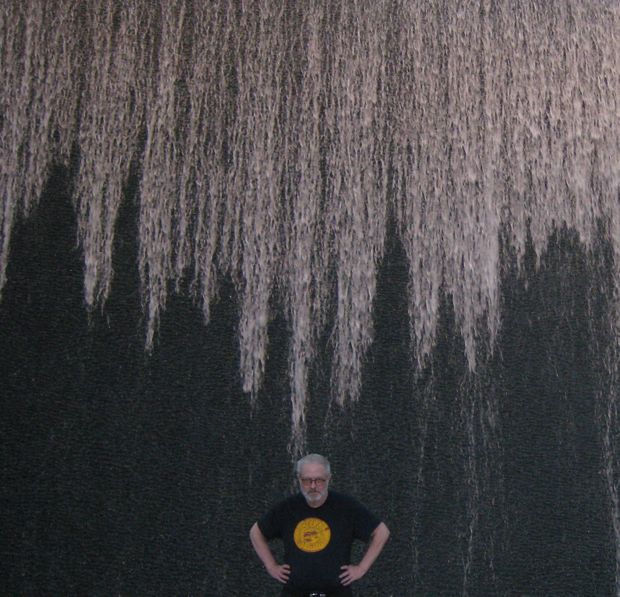
The designers of the complex have done a good job of simulating the quirky progression of spaces you find in a city that has evolved organically over time. Still, you feel the planning that has gone into it all — it's like an urban environment in which zoning laws, not the life of urban dwellers over generations, have determined the mix of the thing. There is much here that is surprising, but nothing really startling — nothing on the order of a brownstone basement turned into a funky little leather bar by some eccentric entrepreneur with a dream, much less a friendly neighborhood porn shop.
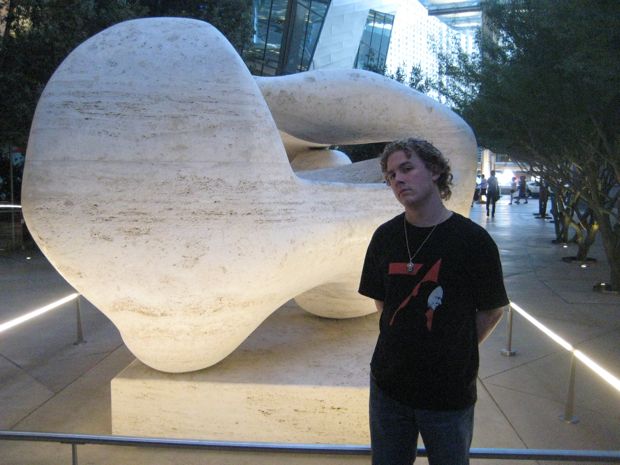
Of course, you find less and less of that sort of thing in the modern Manhattan of the duppies, too. Ordinary people create true cities, not planners, however imaginative and humane, and there always has to be room for what percolates up from the bottom, where most innovation begins. There is no way up from the bottom at City Center, as there is virtually none in Manhattan these days — money and new notions of social hygiene have driven those forces of innovation elsewhere, or merely stifled them.
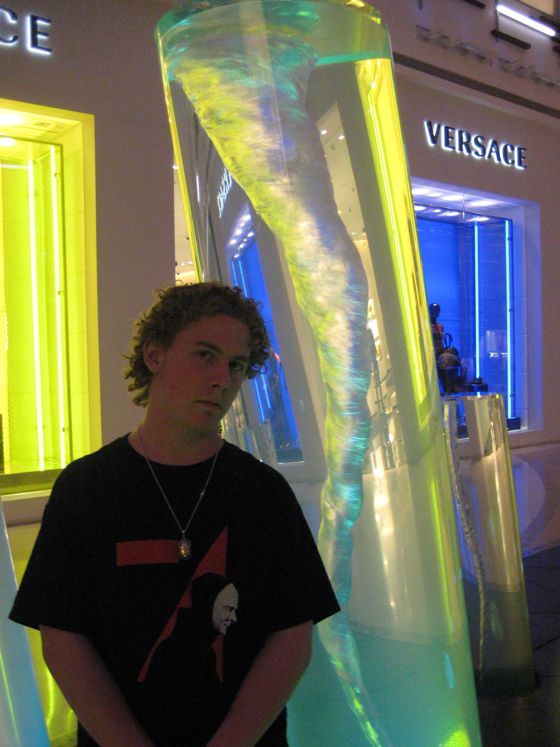
Still, it's interesting to wander through this preposterous and misguided dream of a city, simply because it is a dream. If it lacks the grit and vitality of a real city, especially these days, when it has so few visitors, one is nevertheless touched by the effort to celebrate urbanism, to imagine and recreate its delights. The sheer surrealism of it is engaging.
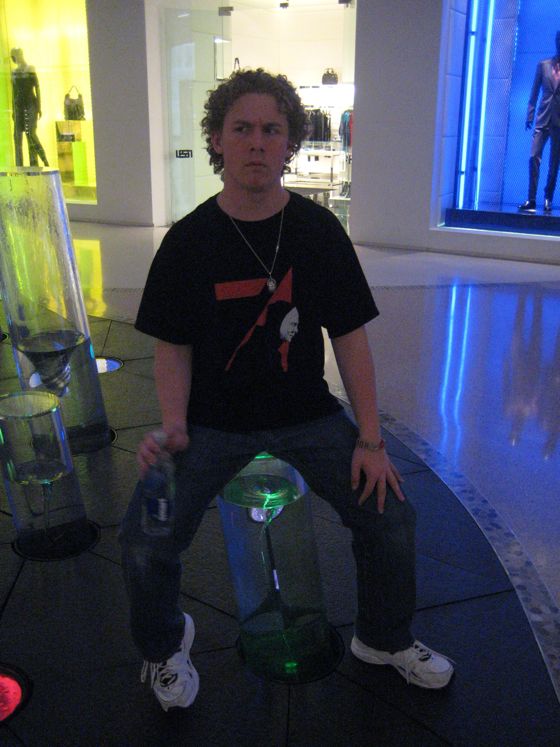
The waterspout in a tube Harry is sitting on above looks like some sort of public space toilet.
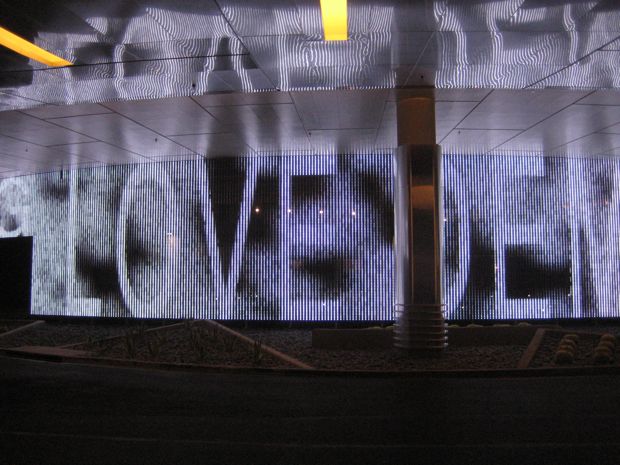
The valet pick-up station at the Aria has a black and white video wall on which random words scroll across. It's neither beautiful nor inspiring, but it's bold.
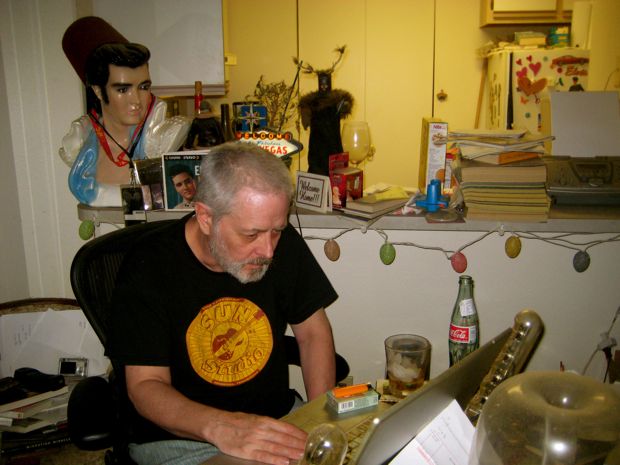
Back home, in the comforting mess and clutter of my apartment, created according to no conscious plan, I search for le mot juste to describe City Center — and find it to be “an inspired void”. An inspired void in the center of the inspired void that is Las Vegas — the true capital of the modern world.
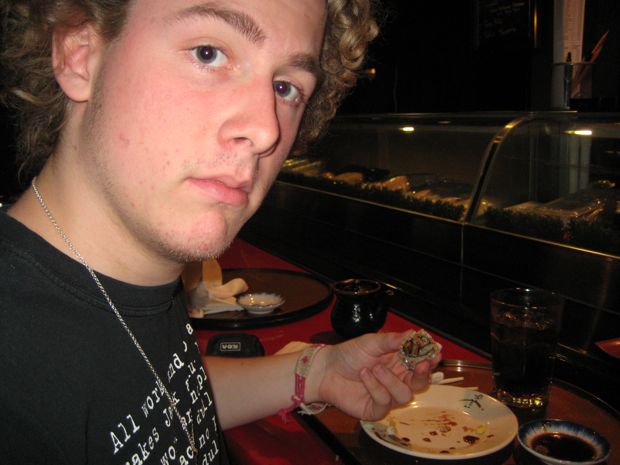
The day after our Red Lobster experience, my nephew Harry and I decided to treat ourselves to some superlative seafood, in its purest form — sushi. We had an early dinner at Hamada, the Las Vegas branch of a noted Japanese restaurant. It's a cool place, a bit off The Strip on Flamingo, with traditional Japanese decor and waitresses who wear kimonos.
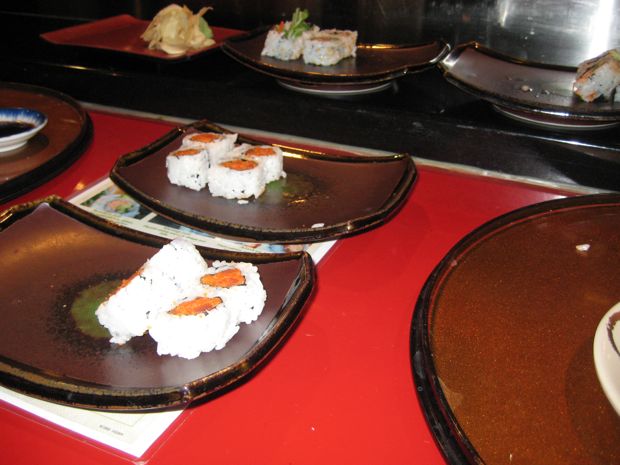
We sat at the sushi bar and ordered ambitiously, but I failed to realized that each “piece” I marked on the order card was actually two pieces — so we were served twice as much food as I expected. Of course, it's hard to find yourself confronted with “too much” octopus or tuna or salmon sushi, or too many salmon-skin rolls. We took home eight spicy tuna rolls, out of the sixteen I had inadvertently ordered, which we polished off later that night.
As dining disasters go, this was a very pleasant one.
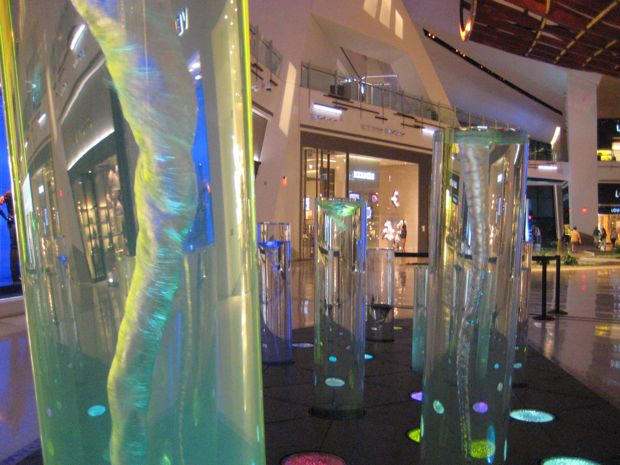
. . . and it is empty.
After our Red Lobster experience yesterday my nephew Harry and I decided to make a thorough investigation of City Center, the massive city within a city which recently opened in the middle of The Las Vegas Strip. I'd visited a casino there and a room at the Aria Hotel, where some friends were staying, but I wasn't quite prepared for the scale and complexity of the whole development.
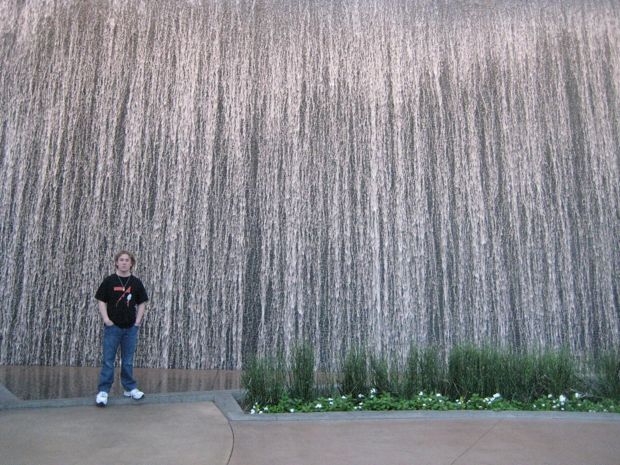
It started to go up when Las Vegas was booming, almost went bankrupt when the economy crashed, and somehow managed to get completed last year. It represents an astonishing vision — a vision of the 21st Century as it might have been imagined by people in the Sixties. Wandering around it is like wandering around in the world of Jean-Luc Godard's Alphaville.
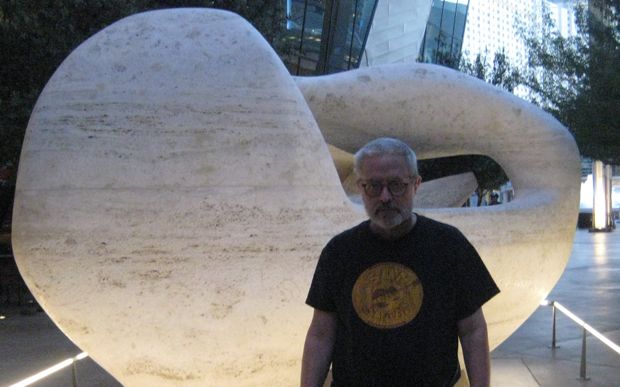
And there's hardly anybody there. It's like a vast movie set the day before filming is due to start. The urban vision it reflects seems to belong to the past and yet the theatricality of it has a kind of charm. It's sort of soul-killing, and sort of enchanting. In short, it's pure Las Vegas.
Who knows what it will be like when the extras arrive to people the streets — if they ever do arrive.
[I'll be writing more about this bizarre, brand-new ghost city in future posts.]
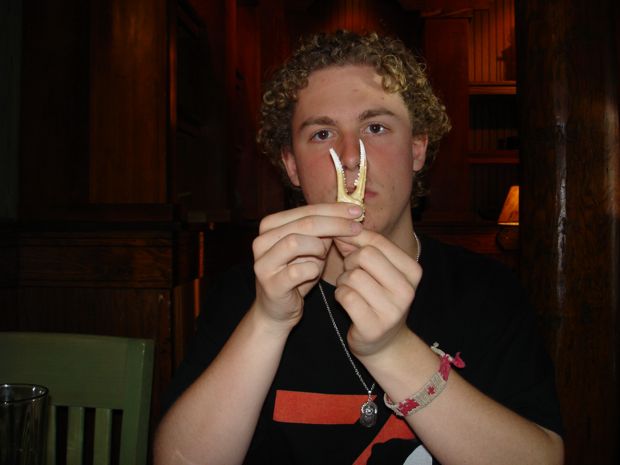
Recently I began to be seriously disturbed by the fact that I had never eaten at a Red Lobster. I did not expect that the experience would be a good one, but avoiding the experience seemed . . . well, it seemed un-American.
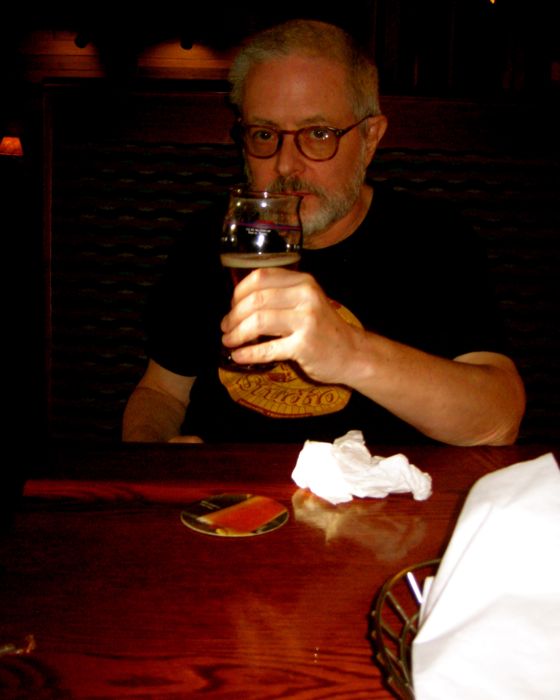
My nephew Harry's current visit to Las Vegas offered a rare opportunity to enlist a companion for a visit to a Red Lobster, because Harry is mad for seafood. Despite his profound lack of enthusiasm for this particular venture — he had eaten at a Red Lobster once before and had found it underwhelming — he agreed to it in a spirit of scientific inquiry and patriotism.
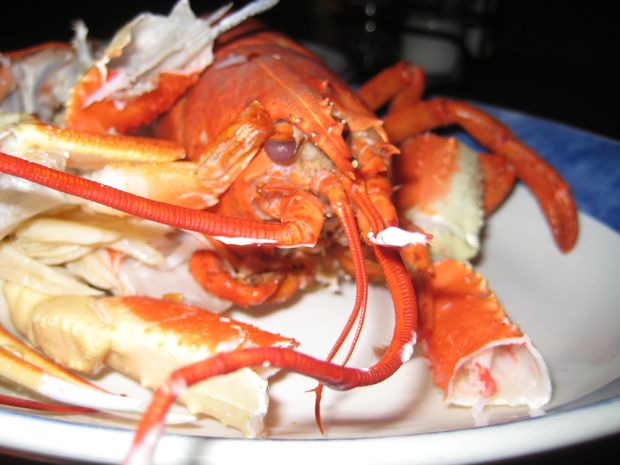
The results of the inquiry can now be reported. The decor of a Red Lobster is predictably generic. The service at a slow hour was acceptable. An appetizer plate of fried calamari, clams and broccoli was appetizing. The recently-live Maine lobster I had was red, and perfectly fine. The crustaceans on Harry's Ultimate Feast platter, a lobster tail and snow crab legs, were tasty — the fried shrimp edible, the shrimp scampi not so much.
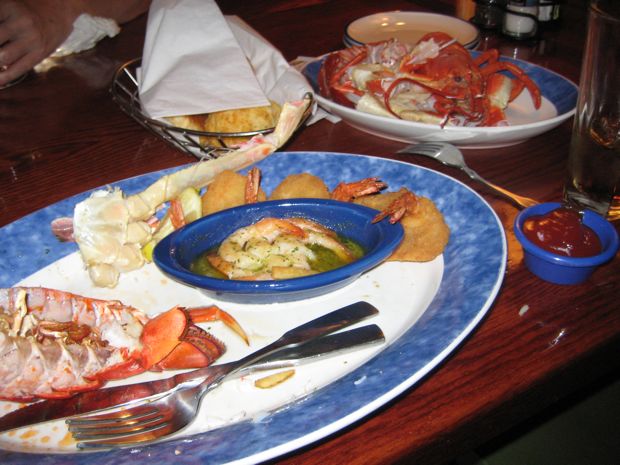
So . . . o. k. seafood in a boring setting at a stiff price. I wouldn't revisit the place here in Las Vegas, where there are so many great seafood restaurants, but I can imagine being grateful to find a Red Lobster in a desolate strip mall somewhere in the heartland, not too far from a desolate motel one happened to be stuck in for one reason or another.
At any rate, I feel that my credentials as an American have been honorably renewed.
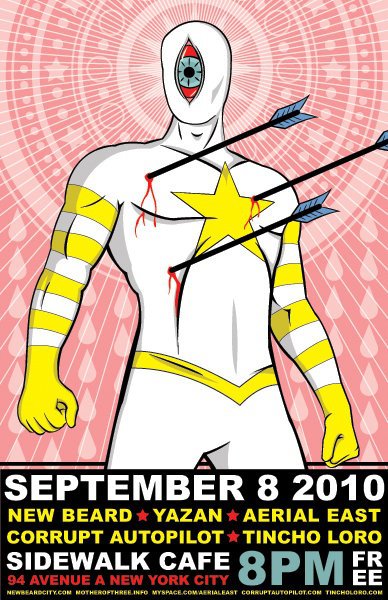
Dima has a blog now — derealization. Cool stuff there — check it out.
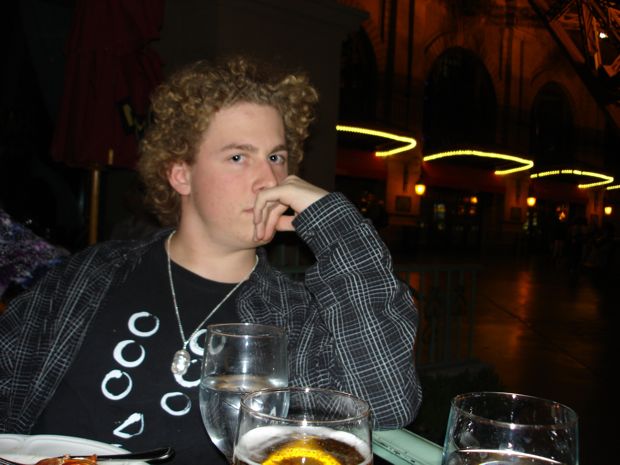
My nephew on the terrace of Mon Ami Gabi at the Paris — in his cool Seven Samurai T-shirt. We feasted like kings — oysters, snails, chicken-liver mousse, steak, lobster.
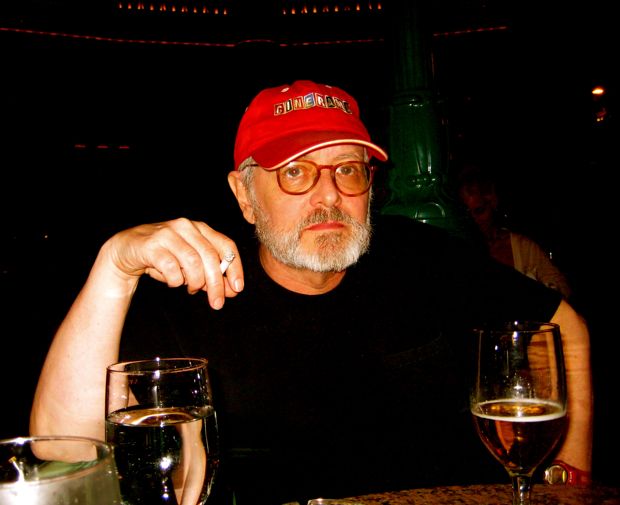
Groups of crazed bachelorettes dressed like hookers, with plastic tiaras and beauty-pageant sashes, swirled around us but did not deter us from serious talk about movies. As you can probably tell from my expression in the photo above, the conversation has just turned to the subject of André Bazin.
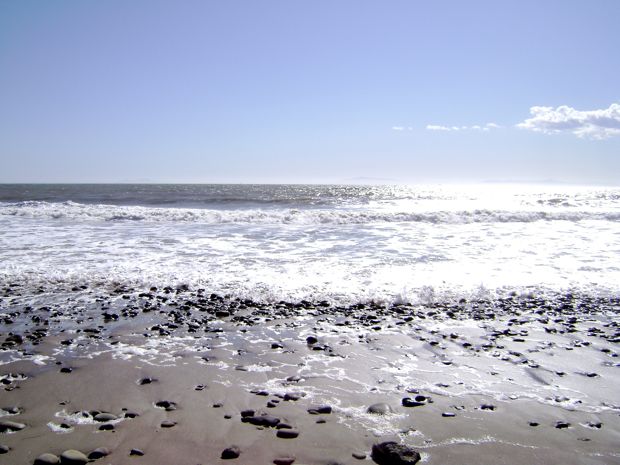
En Californie, le printemps n’existe pas. Entre l’hiver et l’été,
l’année souffre une crise d’identité. Les jours sont entrés dans une
folie d’oscillation entre une chaleur luxurieuse et une mélancholie
d’automne, brouillée par les nuages.
On a l’impression d’habiter un film assemblé par un monteur derangé,
sous la direction d’un metteur en scène dément. Votre rôle dans la
drame est morcelé. Quelquefois on parle Anglais, quelquefois on parle
Francais. Quelquefois, la mer parle dans la voix d’une femme — et
alors l’ocean interromps le discours tendre dans la voix d’un homme.
On a l’envie des longeurs de la saison d’été, monotone et stupide, mais
fixée, lorsque elle vous dirai “Cowabunga, dude!” et on repondra avec
le sourire d’un idiot.
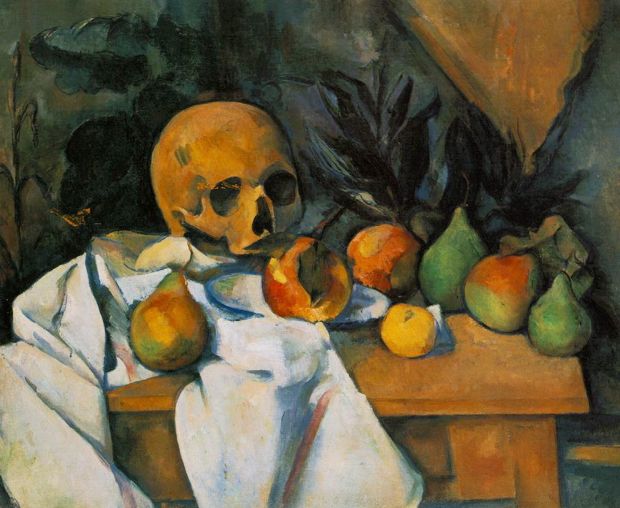
Nature morte . . .